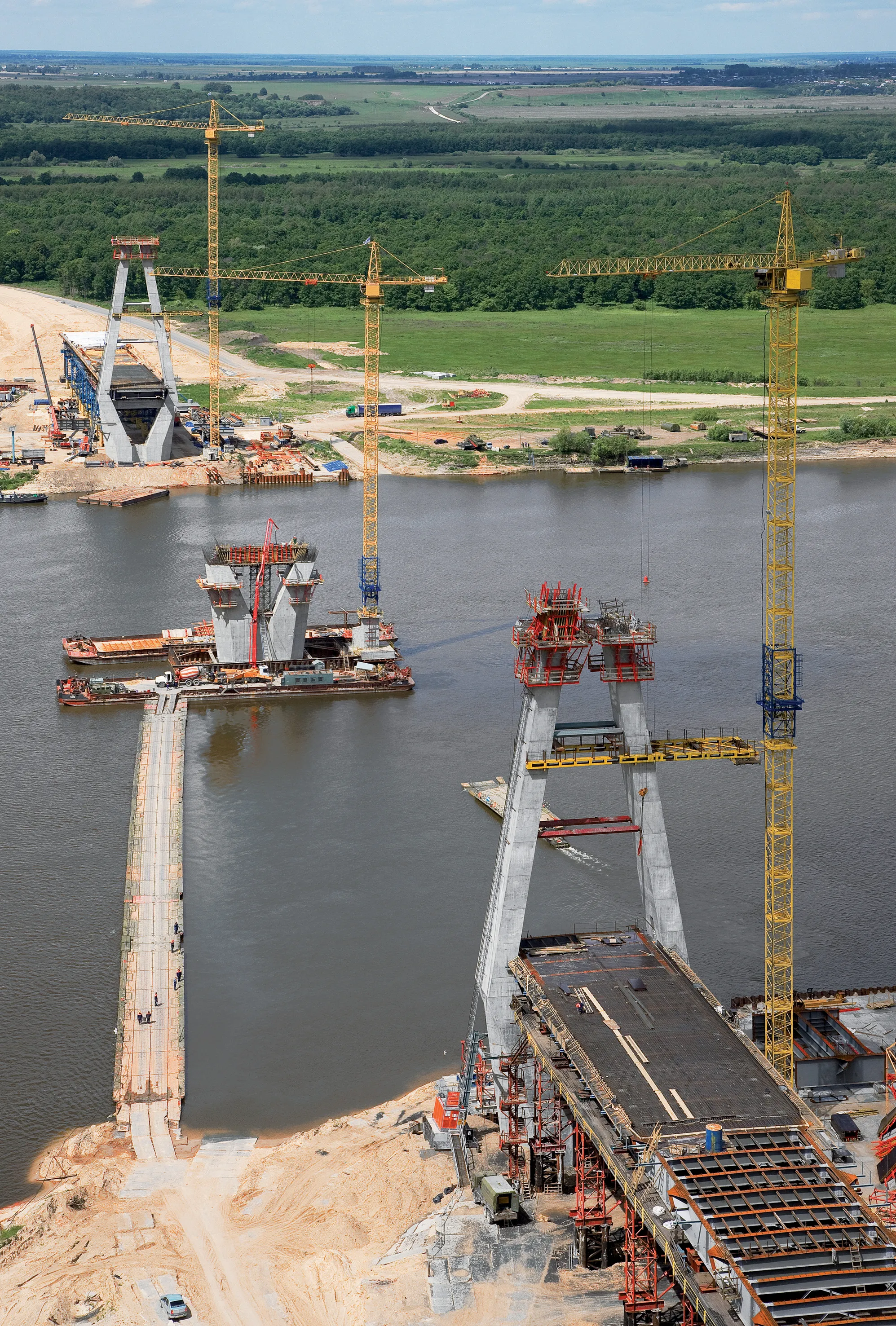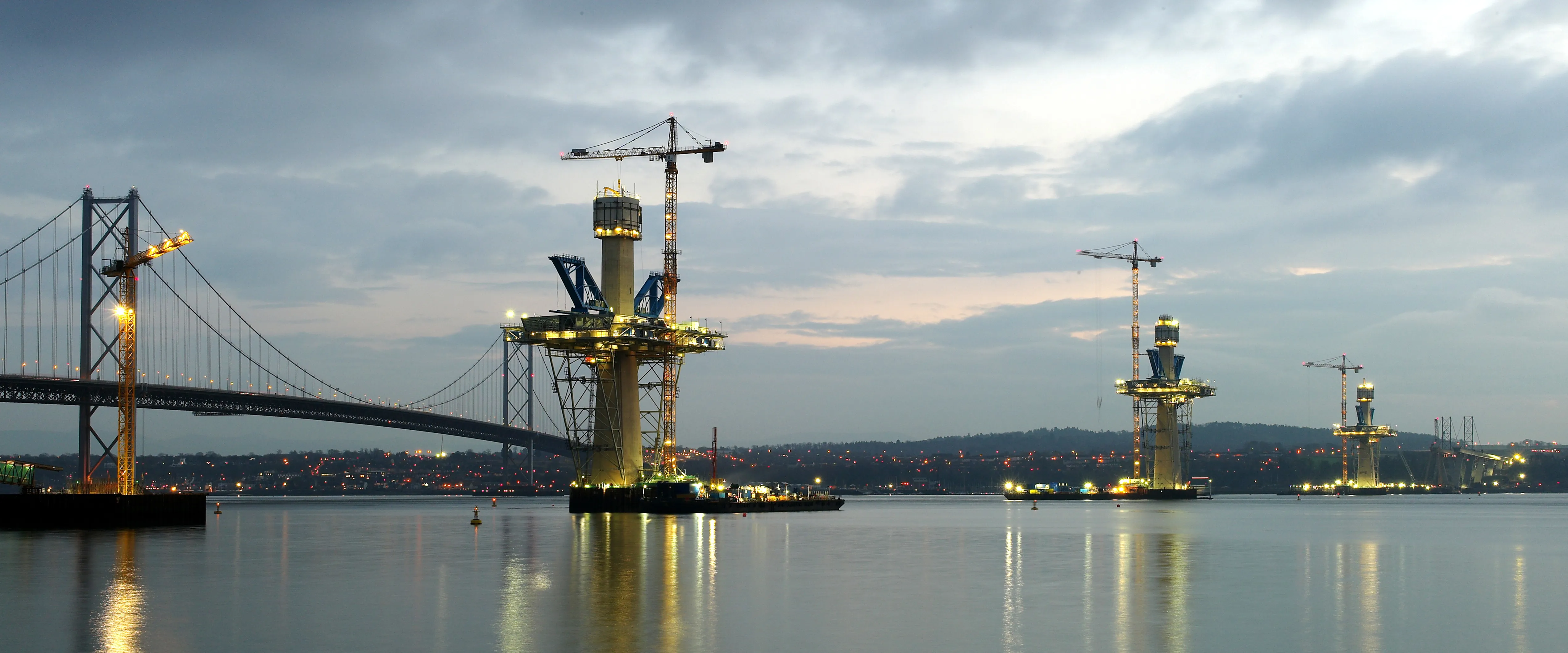Murom, one of Russia's best preserved old cities, is situated in the European part of the country, around 300km to the east of Moscow. The most important industry and economic activities are mechanical engineering along with timber and textiles. The location on the River Oka, a tributary of the Volga and thus an important waterway, as well as the good connections to important main roads and rail routes, are positive economic factors. It is near Murom that German formwork and scaffolding specialist PERI is p
July 30, 2012
Read time: 3 mins

Murom, one of Russia's best preserved old cities, is situated in the European part of the country, around 300km to the east of Moscow.
The most important industry and economic activities are mechanical engineering along with timber and textiles.
The location on the River Oka, a tributary of the Volga and thus an important waterway, as well as the good connections to important main roads and rail routes, are positive economic factors.
It is near Murom that German formwork and scaffolding specialist298 PERI is providing a complete range of services for the construction of the three 90m high bridge piers.
Positioned at distances of 231m from each other respectively, these have been designed to carry the loads of the cable-stay construction which will span the River Oka at a height of 30m. The bridge is scheduled to be opened in 2009.
Underneath the carriageway, the cross-sectional form and dimensions of the pylon legs are continuously changing and the pentagonal basis transforms into a rectangle at height of the carriageway slab. In addition, the resulting outside pylon edges exhibits a curvature with a 300mm radius. From the top edge of the carriageway upwards, the shape and dimensions in a lateral direction remain constant for the most part; in a longitudinal direction, however, the external dimensions of the pylon tapers from 6-3m.
For the 21 concreting sections in each case, with 3.67m standard cycle heights, PERI engineers designed customised climbing formwork solutions and, in so doing, relied on the flexibility of the PERI VARIO girder wall formwork. In connection with workflow-oriented execution planning, all required adjustments can be carried out on the variable cross-sections from cycle to cycle with a minimum of time and effort. Together with the PERI CB climbing scaffold system for the vertical and slightly inclined areas as well as SKS/SSC brackets of the PERI SKS single-sided, retractable climbing formwork for the forward and reversed-angled sections, fully adaptable climbing formwork units are formed. On each of the pylon legs, the four scaffold platforms along with the re-adjusted formwork for each concreting section is climbed by means of a single crane pick.
"As a cost-effective solution for non-standard and unusual architect demands as well as any kind of special designs, PERI also delivers pre-assembled 3D formwork units directly to the construction site," says the company.
"For the Murom bridge, these serve to accurately form the contours of the pier geometry at the bottom, and are attached to the inside of the VARIO formwork at the front." The customised individual units were produced in Weissenhorn at the company's866 CNC timber processing plant but then shipped to Russia in the form of compact construction kits.
"Due to the precision-made formed components complete with insertion slits, the clear markings and an exact construction plan, joining was able to be carried out on site with only a minimum of effort." The contractor is2450 Mostotrest of Moscow, and field service is by PERI Moscow and Weissenhorn.
The most important industry and economic activities are mechanical engineering along with timber and textiles.
The location on the River Oka, a tributary of the Volga and thus an important waterway, as well as the good connections to important main roads and rail routes, are positive economic factors.
It is near Murom that German formwork and scaffolding specialist
Positioned at distances of 231m from each other respectively, these have been designed to carry the loads of the cable-stay construction which will span the River Oka at a height of 30m. The bridge is scheduled to be opened in 2009.
Underneath the carriageway, the cross-sectional form and dimensions of the pylon legs are continuously changing and the pentagonal basis transforms into a rectangle at height of the carriageway slab. In addition, the resulting outside pylon edges exhibits a curvature with a 300mm radius. From the top edge of the carriageway upwards, the shape and dimensions in a lateral direction remain constant for the most part; in a longitudinal direction, however, the external dimensions of the pylon tapers from 6-3m.
For the 21 concreting sections in each case, with 3.67m standard cycle heights, PERI engineers designed customised climbing formwork solutions and, in so doing, relied on the flexibility of the PERI VARIO girder wall formwork. In connection with workflow-oriented execution planning, all required adjustments can be carried out on the variable cross-sections from cycle to cycle with a minimum of time and effort. Together with the PERI CB climbing scaffold system for the vertical and slightly inclined areas as well as SKS/SSC brackets of the PERI SKS single-sided, retractable climbing formwork for the forward and reversed-angled sections, fully adaptable climbing formwork units are formed. On each of the pylon legs, the four scaffold platforms along with the re-adjusted formwork for each concreting section is climbed by means of a single crane pick.
"As a cost-effective solution for non-standard and unusual architect demands as well as any kind of special designs, PERI also delivers pre-assembled 3D formwork units directly to the construction site," says the company.
"For the Murom bridge, these serve to accurately form the contours of the pier geometry at the bottom, and are attached to the inside of the VARIO formwork at the front." The customised individual units were produced in Weissenhorn at the company's
"Due to the precision-made formed components complete with insertion slits, the clear markings and an exact construction plan, joining was able to be carried out on site with only a minimum of effort." The contractor is









